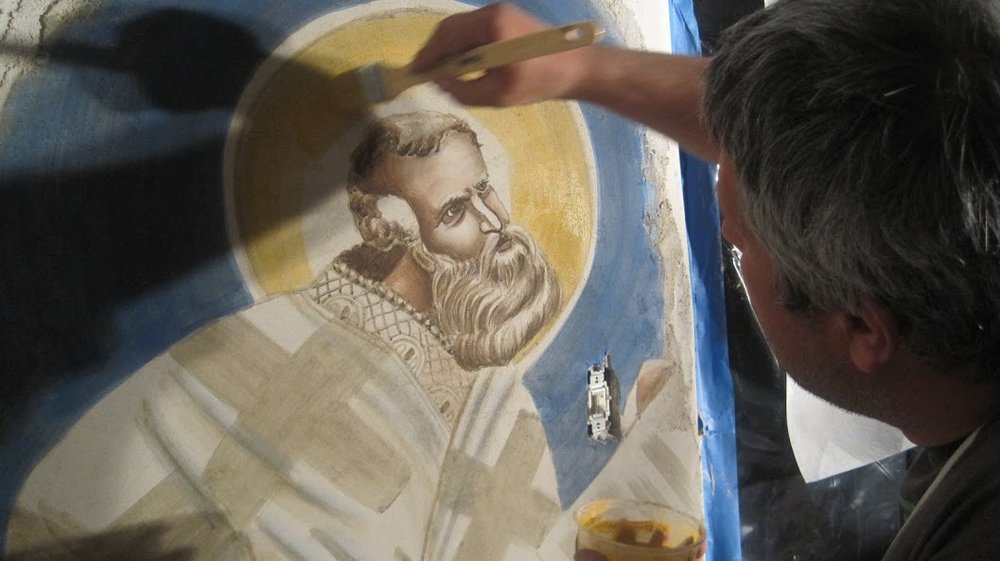
Overall, the workshop will focus on studying the details of both wall and panel preparation as well as classic fresco and sgraffito techniques. In addition, students will further their understanding of the perspective, value range principals, and the verdaccio under painting and its consequent effect on the painting process.
In the course of the two-week workshop, students will create one small-scale work, individually exploring the sgraffito technique and one group “fresco bodega” project, an eight by four foot, wall fresco in the buon fresco technique, which will be adorned with classic sgraffito elements. Students will explore classic techniques of buon fresco, sgraffito, preparatory stages and final wall painting stage.
For more information, contact us.
Pompeii
We will travel to Pompeii in order to explore specific fresco techniques used by Romans, as well as the details of the "marmorino" layer of plaster-system used in Pompeii. The group will compare this to the terracotta (hydraulic lime) based lime fresco plaster used by their Etruscan contemporaries.
Ravenna
We will also visit Ravenna in order to observe techniques as practiced in Byzantium and presently in the Orthodox Christian tradition as well as the details of wall and panel preparation. Students will consider specific methods of applying color and painting principles of the "canon" as well as discover merging points and crosspollination with Italian frescoes.
Florence
In Florence, we will look at one-layer and two-three layer classic sgraffito systems with lime-paint and plaster top coats as well as masterworks in the exterior classic buon fresco tradition and its combination with sgraffito.
We will spend first week preparing plasters (specific to each layer of fresco), learning tools and materials, recreating the cartoons, making color studies and assigning the parts student will be responsible for in the upcoming week. Students will be able to take home the studies that were created by them during the first week.
Using the knowledge, practice and study we will complete eight by four foot fresco working as a team "bodega". The completed fresco will remain at the ICA, however, you are welcome to come next year to learn "strappo" (fresco removal technique) and take it off the wall.
Pompeii
We will travel to Pompeii in order to explore specific fresco techniques used by Romans, as well as the details of the "marmorino" layer of plaster-system used in Pompeii. The group will compare this to the terracotta (hydraulic lime) based lime fresco plaster used by their Etruscan contemporaries.
Ravenna
We will also visit Ravenna in order to observe techniques as practiced in Byzantium and presently in the Orthodox Christian tradition as well as the details of wall and panel preparation. Students will consider specific methods of applying color and painting principles of the "canon" as well as discover merging points and crosspollination with Italian frescoes.
Florence
In Florence, we will look at one-layer and two-three layer classic sgraffito systems with lime-paint and plaster top coats as well as masterworks in the exterior classic buon fresco tradition and its combination with sgraffito.